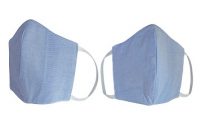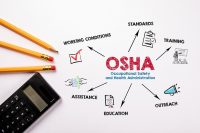Category: Special Topics in Safety Management
Safety is a process, and as such, needs to be managed. This section offers resources to create a viable safety program, sell it to senior management, train supervisors and employees in using it, and then track and report your progress. Look also for ways to advance your own skills in these areas, both for your current job, and those that follow.
In our latest installment of Ask the Expert, brought to you by the team of industry experts at EHS Hero® , we look at a recent question from a subscriber regarding blocked exit doors and safety standards for emergency evacuation. See what the experts had to say and for additional information regarding emergency evacuation protocols, […]
Imagine suffering from carbon monoxide poisoning, reporting it, and then being fired for seeking medical attention. Toxic work environment? The Occupational Safety and Health Administration (OSHA) says yes. Poisoned, Then Fired A Texas hotel is in hot water with OSHA. In January 2019, an employee of All Seasons Hospitality and Investments notified her employer she […]
In his April 2020 letter to Amazon’s shareholders, Jeff Bezos declared that Amazon will become the safest place to work on Earth. To support that goal, the company recently launched a massive campaign to cut workplace injuries in half by 2025. While this reduction metric is helpful, Bezos’s major ambition to be “the safest workplace” […]
An EHS Hero® subscriber is having trouble persuading painters to use eye protection during spray painting operations, who claim that the PPE gets in the way of the task. This led the subscriber to ask our experts: Is eye protection a compliance requirement for spray painting? See what they had to say on the matter.
The National Institute for Occupational Safety and Health (NIOSH) is marking the first anniversary of its Center for Work and Fatigue Research (CWFR). The center pursues NIOSH’s long-standing interest in the workplace health and safety effects of nonstandard work hours, such as long hours and shiftwork.
Summer safety hazards abound. Are you ready to protect your employees during the Atlantic, Eastern Pacific, and Gulf Coast hurricane season? Wildfires? What about excessive heat? Are you ready for an influx of young workers with little previous work experience and no safety training?
On May 29, the California Division of Occupational Safety and Health (Cal/OSHA) reminded employers they must protect their employees who work outdoors from heat stress under the state’s heat illness prevention regulations. The National Weather Service issued an excessive heat warning for northern California and the Central Valley through 9 p.m. PDT June 1.
The National Institute for Occupational Safety and Health (NIOSH) released new criteria for masks to help protect workers from the SARS-CoV-2 virus, which causes COVID-19. The NIOSH criteria incorporate the nonregulatory American Society for Testing and Materials (ASTM) Specification for Barrier Face Coverings (F3502-21).
Is your fall protection compliance ready for summer and the post-pandemic return to normalcy?
On May 20, the Occupational Safety and Health Administration (OSHA) proposed changes to its walking-working surfaces standards (29 CFR §§1910.28 and 1910.29) to clarify which handrail and stair rail system requirements apply to new stair rail systems (86 FR 27332). The agency also scheduled an informal hearing to discuss proposed changes to the hazard communication […]










